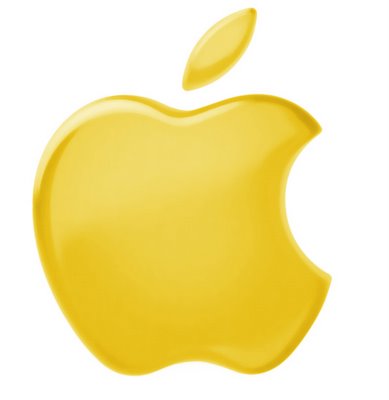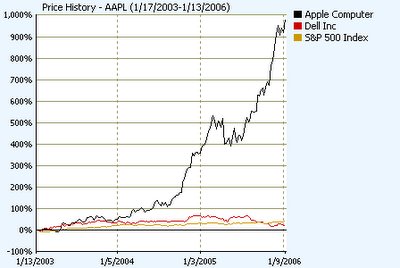May 19, 2006. A day that will live in conspiracy theory:
Item: On this day, The Da Vinci Code opened in movie complexes all across the land. The film's plot circles around the Louvre Museum. At the Louvre, a contemporary addition to the former royal palace features a large glass pyramid in a courtyard.
Item: On this day, at 6. p.m. EDT, Steve Jobs opened his new flagship store on Fifth Avenue in New York City, across from the French-looking Plaza Hotel. The new store, located below street level in the contemporary courtyard of the GM building,is topped by a giant glass cube.
Coincidence? We think not. Just one more illustration of Steve Job's marketing genius. You can check out a
few photos of the cube's unwrapping here.
For an informative article on the man in charge of Apple's stores and the creative thinking that goes into them, see
this NY Times article.
Note, for instance, that the size of Apple's stores relates to "the size of the brand," not the sizes of iPods or macBooks.
Designing "wealth-management stores" is a different challenge, but here, too, creativity could pay off. A few banks have picked up on the coffee-shop approach suggested on this blog last year.
Note also that Apple found it unexpectedly easy to recruit expert staff and Apple Geniuses from the community of Mac lovers.
How do you build a community among your clients and prospects? You might emulate Mac User Groups like
Seacoastmac.org and start a discusssion board. Theirs draws over 150 participants from as far away as Australia.
Might work like this: Your clients, after logging in to your online facility, are able to join a discussion group. The group might also include a few friendly attorneys and CPAs. The professionals could chip in on taxes and such; clients would discuss the people side of financial planning for the affluent:
"Should I have a pre-mup before remarrying?"
"At what age should a trust for my daughter end? Or should it be for life?"
"Should affluent grandparents feel obliged to shell out for private schools?
"We're thinking of making a sizable donation to such-and-such local charity. Is it as worthy as we think?"
You get the idea. Got a better one? Go for it.
May The Steve Be With You!























